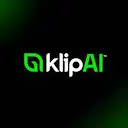About PinGo
PinGo is a decentralized platform that focuses on utilizing idle computational resources to support AI and machine learning applications. Its primary goal is to offer accessible and affordable computational power to developers, researchers, and businesses, especially within the rapidly expanding AI sector. By harnessing unused computing power, PinGo creates an efficient, decentralized system that reduces reliance on expensive centralized cloud providers. This opens opportunities for a wider range of users to access the necessary computational infrastructure for AI development and data processing tasks.
PinGo’s mission centers on democratizing access to computational resources, addressing key challenges like high costs, security concerns, and underutilized hardware. Centralized providers, such as AWS and Google Cloud, often charge steep fees for computational power. By creating a decentralized network, PinGo mitigates these issues, allowing users to contribute their own idle resources and benefit from a decentralized, secure, and privacy-focused infrastructure.
PinGo is dedicated to solving the demand for computational power by utilizing global idle resources. As AI and machine learning become increasingly vital to various industries, the need for scalable and affordable computational resources has become a significant challenge. Traditional cloud providers, like AWS and Google Cloud, often present high costs and potential centralization risks. In response, PinGo offers a decentralized solution that mitigates these issues by forming a global P2P network where users can contribute their unused computational resources.
One of PinGo's key innovations is the combination of DePin (Decentralized Infrastructure) and Decloud technologies. This architecture supports AI developers, data scientists, and businesses by providing the necessary computing power at a lower cost. Unlike its competitors, such as Golem and Akash, which focus on decentralized computing, PinGo distinguishes itself by targeting the niche needs of AI and machine learning specifically. This makes it an ideal choice for users in these fields who require a decentralized and scalable solution.
Since its launch, PinGo has continuously developed its ecosystem to support a wide range of participants, from individual contributors to large organizations. The platform allows anyone with idle computational power to monetize their resources by contributing to a global network. As a result, users can access affordable resources for AI model training, data processing, and machine learning while benefiting from enhanced security and privacy features provided by decentralization.
PinGo's roadmap includes further innovations such as developing infrastructure for machine learning and promoting a decentralized cloud ecosystem that benefits all users. As the need for AI-driven infrastructure increases globally, PinGo is prepared to meet this demand with a solution that is both secure and scalable, positioning itself as a vital player in the decentralized AI infrastructure space.
The PinGo platform offers several key benefits and features:
- Maximizing Idle Resources: Users can contribute their unused computational power, ensuring efficiency while earning rewards for participating in the network.
- Cost Efficiency: PinGo reduces the cost of accessing computational resources for AI developers, making high-performance computing affordable.
- Decentralization for Privacy: By leveraging decentralized infrastructure, PinGo enhances user privacy and security, reducing risks of centralization.
- Scalable Infrastructure: The platform is designed to handle the growing demand for AI model training and data processing, supporting scalability as project needs evolve.
- Inclusive Participation: PinGo welcomes users from all backgrounds to contribute resources, fostering an inclusive and decentralized network.
- AI-Specific Infrastructure: Tailored for the specific needs of AI and machine learning, the platform distinguishes itself from general decentralized computing projects like Golem and Akash.
- Resilience: The decentralized nature of PinGo provides better protection against potential disruptions and cyber threats than traditional centralized cloud services.
To begin using PinGo, follow these steps:
- Create an Account: Visit the PinGo website and sign up for an account. Complete the registration by verifying your email address.
- Download the Software: After registration, download the official PinGo software. This will connect your device to the decentralized network, allowing you to contribute or access computational resources.
- Connect Your Device: Set up your hardware to contribute idle computational power. Follow the software instructions to ensure your device is properly configured to share resources.
- Explore the Dashboard: Log into your PinGo account dashboard to manage contributions and resources. The dashboard also provides insights into earnings, network status, and available tools for AI projects.
- Start Contributing or Using Resources: Begin contributing your computing power or utilizing the decentralized infrastructure for AI model training, data processing, and more. Contributors earn rewards based on the computational power they share.
- Consult Documentation: For detailed setup instructions, troubleshooting, and more, visit the official PinGo GitBook documentation, which provides comprehensive guides for all users.
PinGo Reviews by Real Users
PinGo FAQ
PinGo leverages decentralized architecture to prioritize user privacy. Unlike centralized services, data on the PinGo network is distributed, minimizing the risks of breaches or centralized data misuse. The system ensures data encryption and privacy through its decentralized infrastructure, making it highly secure for contributors and users alike.
Yes, PinGo is designed to be inclusive, allowing anyone with spare computational resources to contribute. Users simply need to install the necessary software and connect their devices. Once connected, your idle power can be shared on the network, earning you rewards while supporting AI and machine learning projects.
PinGo offers a cost-effective solution for AI developers by providing access to decentralized computational power. This helps lower the costs of AI model training and data processing, allowing developers to focus more on innovation rather than infrastructure costs. For more information, check out the official PinGo website.
PinGo sets itself apart by focusing specifically on the needs of AI and machine learning applications, offering a highly specialized infrastructure for these projects. While competitors like Golem and Akash provide general decentralized computing services, PinGo optimizes its resources for AI-driven tasks.
After connecting your device to the PinGo network, you can access the dashboard, which provides real-time insights into your contributions and earnings. The dashboard tracks the computational power you've contributed, allowing you to see exactly how much you've earned over time while contributing to the decentralized infrastructure.
You Might Also Like












